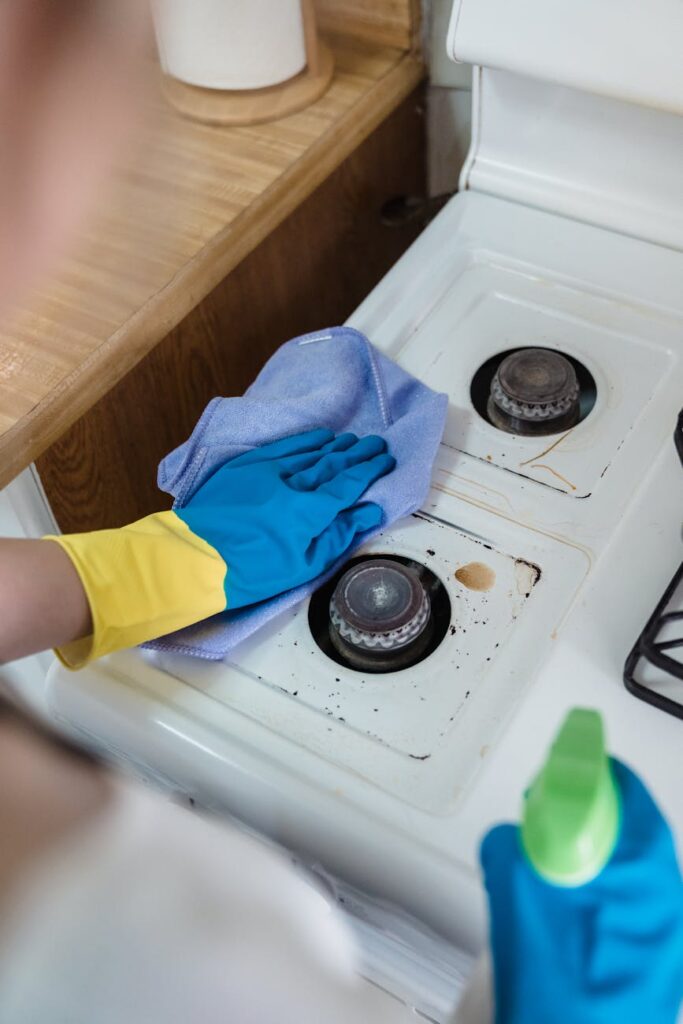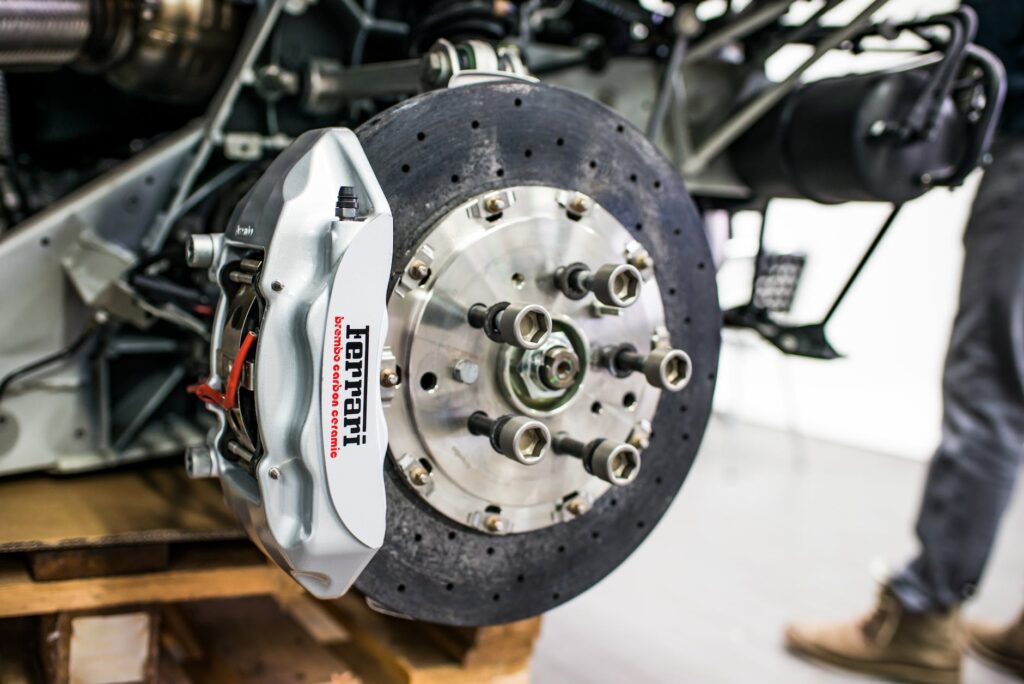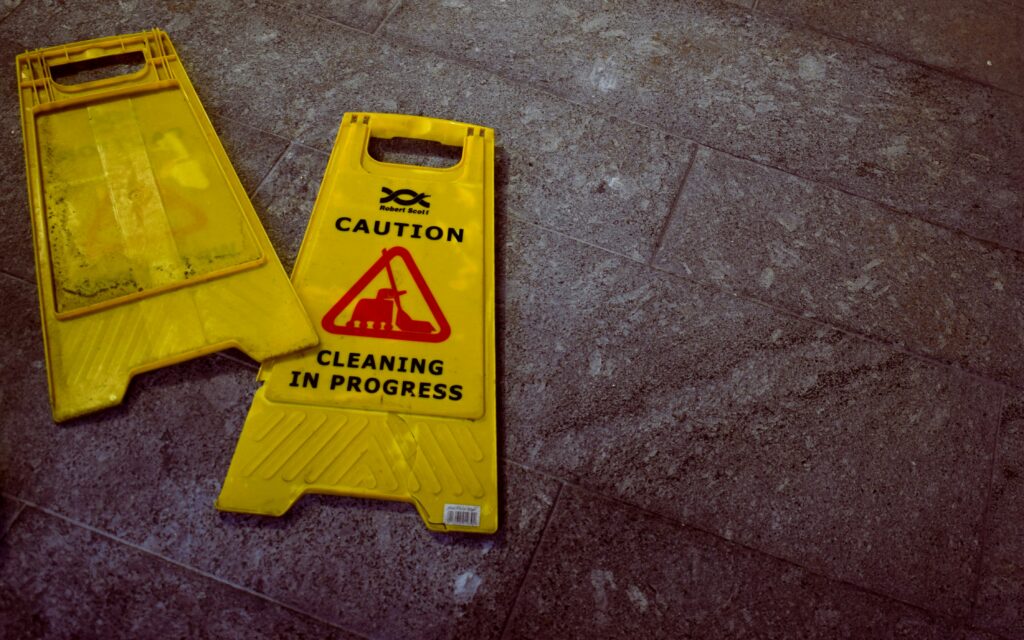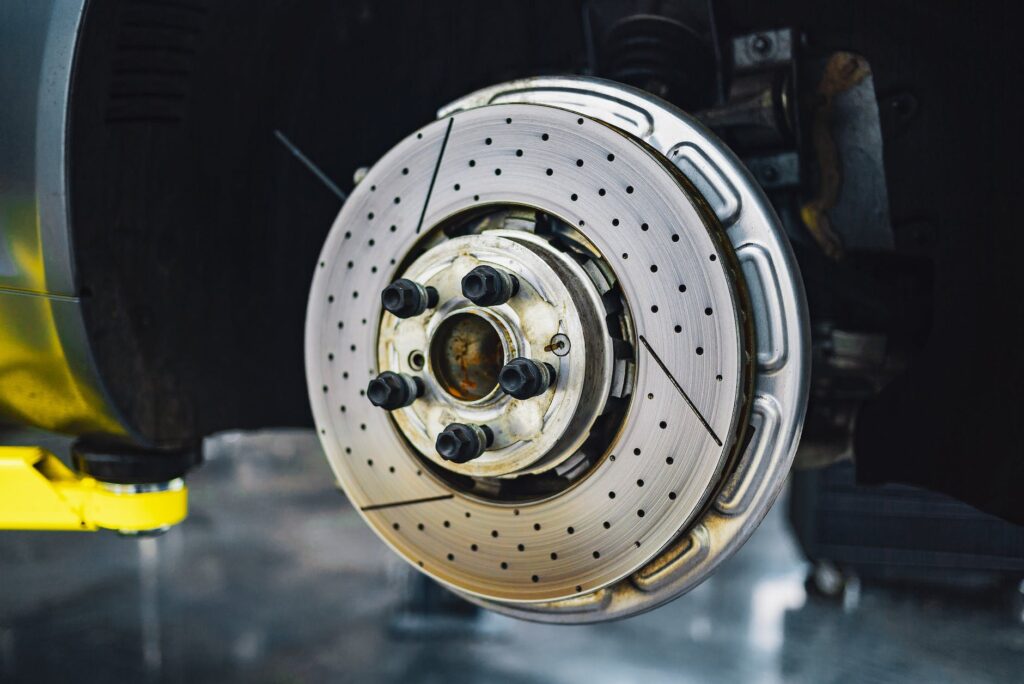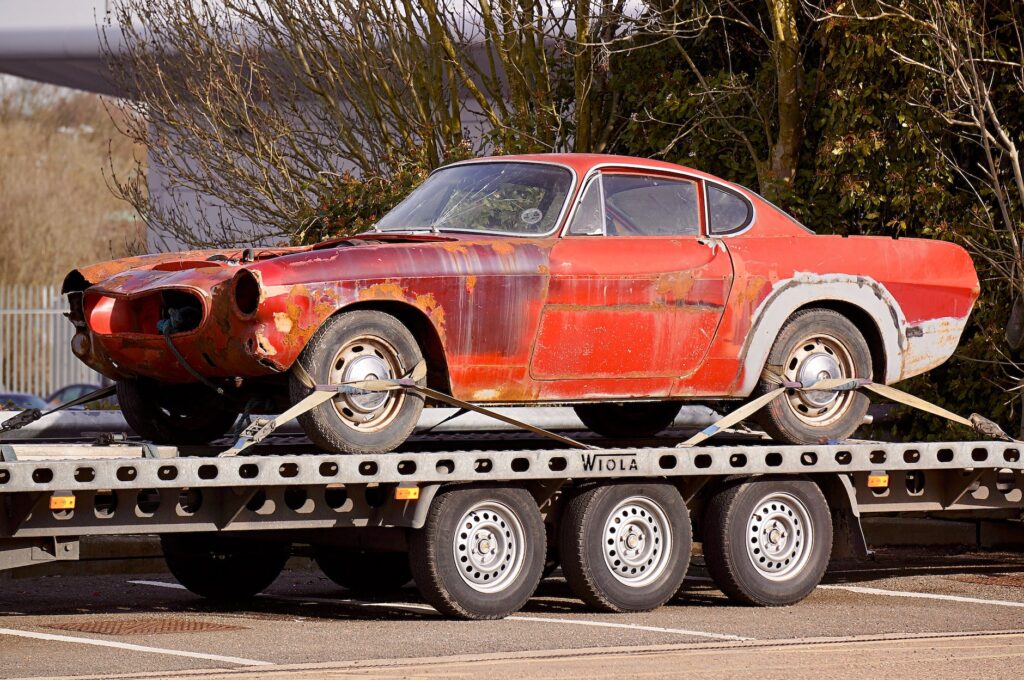Contents
Understanding Squeaky Brakes
Squeaky brakes can be a nuisance and a cause for concern for vehicle owners. Understanding the causes of brake noise and the importance of addressing squeaky brakes is essential for maintaining optimal safety and performance.
What Causes Brake Noise?
Brake noise can be attributed to several factors. One common cause is the vibration that occurs when the brake pads come into contact with the brake rotor or disc. This vibration can create an audible squealing or squeaking sound. Other potential causes include worn brake pads, improper brake pad installation, inadequate lubrication, or the accumulation of brake dust and debris.
To address brake noise effectively, it is important to identify the underlying cause. If you’re unsure about the cause of your squeaky brakes, it is recommended to consult a qualified mechanic or automotive professional for a thorough inspection and diagnosis.
Importance of Addressing Squeaky Brakes
Addressing squeaky brakes is not just about eliminating an annoying noise; it is crucial for vehicle safety and performance. Squeaky brakes may indicate underlying issues with the braking system or components that require attention. Ignoring brake noise can lead to further damage, reduced braking efficiency, and potentially unsafe driving conditions.
In addition to safety concerns, squeaky brakes can also impact the overall driving experience. The noise can be bothersome and may detract from the comfort and enjoyment of the ride. Resolving the issue promptly can help restore a smooth and quiet braking experience.
Using brake lubricant sprays, such as CRC Disc Brake Quiet, Permatex Ultra Disc Brake Caliper Lube, Napa Sil-Glyde Silicone Brake Lubricant, or 3M Disc Brake Quiet, can be an effective solution for addressing squeaky brakes. These lubricant sprays help eliminate vibrations and reduce noise when the brakes are applied, providing a smoother and quieter braking experience.
By understanding the causes of brake noise and recognizing the importance of addressing squeaky brakes, vehicle owners can take proactive steps to ensure the safety, performance, and comfort of their braking system. It is important to follow the manufacturer’s instructions when using brake lubricant sprays or consult a professional for guidance if needed.
Using Brake Lubricant Sprays
When it comes to addressing squeaky brakes, one effective solution is to use brake lubricant sprays. These sprays are designed to reduce or eliminate brake noise by providing lubrication and dampening vibrations. In this section, we will explore the benefits of brake lubricant sprays and the different types available.
Benefits of Brake Lubricant Sprays
Brake lubricant sprays offer several benefits when it comes to combating squeaky brakes. Here are some key advantages:
Noise Reduction: Brake lubricant sprays help to eliminate or reduce brake squealing noises by dampening the vibrations that cause the noise. When applied properly, they create a barrier between the brake components, reducing friction and minimizing noise generation.
Improved Brake Performance: By reducing brake noise, lubricant sprays can enhance the overall performance of your brakes. When your brakes function quietly and smoothly, you can have increased confidence in their ability to stop your vehicle effectively.
Extended Brake Life: Proper lubrication provided by these sprays can help extend the life of your brake components. By reducing friction and preventing excessive wear, lubricant sprays contribute to the longevity of your brakes, potentially saving you money on replacements.
Easy Application: Brake lubricant sprays are designed for easy application. With a few simple steps, you can effectively apply the spray to the appropriate areas, such as the back of the brake pads, shims, and caliper slides.
Different Types of Brake Lubricant Sprays
There are various types of brake lubricant sprays available on the market. The most commonly used types include:
CRC Disc Brake Quiet: CRC Disc Brake Quiet is a popular brake lubricant spray known for its effectiveness in reducing or eliminating brake squeal. This dedicated product is designed to dampen vibrations and reduce noise when the brakes are applied. It is important to follow the manufacturer’s instructions for proper application to achieve the best results.
Permatex Ultra Disc Brake Caliper Lube: Permatex Ultra Disc Brake Caliper Lube is a silicone-based lubricant spray commonly used as a DIY solution for squeaky brakes. It can be applied to the back of the brake pads during replacement, if the pads are in good condition. This spray helps to eliminate or reduce brake squealing noises.
Napa Sil-Glyde Silicone Brake Lubricant: Napa Sil-Glyde Silicone Brake Lubricant is another silicone-based brake lubricant spray that provides lubrication and noise reduction. It is designed to withstand high temperatures and maintain its effectiveness over time.
3M Disc Brake Quiet: 3M Disc Brake Quiet is a high-quality brake lubricant spray that effectively reduces brake noise. It is specifically formulated to dampen vibrations and provide long-lasting noise reduction.
When selecting a brake lubricant spray, consider factors such as the specific needs of your vehicle, the severity of the brake noise, and the recommendations of your vehicle’s manufacturer. It is important to follow the instructions provided by the manufacturer of the chosen spray for optimal results.
By using brake lubricant sprays, you can address squeaky brakes and enjoy a quieter and smoother braking experience. However, it is essential to remember that brake lubricant sprays are not a permanent solution. Regular brake maintenance, inspection, and addressing any underlying issues are crucial for the long-term performance of your brakes. To learn more about other solutions for squeaky brakes, refer to our article section on Other Solutions for Squeaky Brakes.
Top Brake Lubricant Sprays
When it comes to addressing squeaky brakes, using a high-quality brake lubricant spray can help eliminate noise and improve brake performance. Here are four top brake lubricant sprays that are widely recommended by automotive enthusiasts and professionals:
CRC Disc Brake Quiet
CRC Disc Brake Quiet is a popular choice among vehicle owners seeking a solution for squeaky brakes. This brake lubricant spray is designed to reduce brake noise by dampening vibrations and preventing brake pad squeal. It forms a protective layer on the brake components, ensuring smooth and silent operation.
CRC Disc Brake Quiet is easy to apply and provides long-lasting lubrication. It is compatible with all types of brake systems, including disc brakes. This brake lubricant spray helps improve braking performance and ensures a quieter driving experience.
Permatex Ultra Disc Brake Caliper Lube
Permatex Ultra Disc Brake Caliper Lube is another highly regarded brake lubricant spray. It is specifically formulated to withstand high temperatures and extreme pressure, making it ideal for brake systems that operate under demanding conditions.
This brake lubricant spray provides excellent lubrication and helps reduce brake noise. It is resistant to water, corrosion, and brake fluid, ensuring long-lasting performance. Permatex Ultra Disc Brake Caliper Lube is compatible with all types of disc brake systems and can be easily applied to the necessary brake components.
Napa Sil-Glyde Silicone Brake Lubricant
Napa Sil-Glyde Silicone Brake Lubricant is a trusted brake lubricant spray that is widely used to eliminate brake noise and improve brake performance. It is formulated with high-quality silicone, which provides excellent lubrication and helps reduce friction and squeaking.
This brake lubricant spray is resistant to high temperatures and is suitable for use on brake pads, caliper hardware, and other brake components. Napa Sil-Glyde Silicone Brake Lubricant helps extend the life of brake parts and ensures smooth and quiet braking.
3M Disc Brake Quiet
3M Disc Brake Quiet is a reliable brake lubricant spray that effectively reduces brake noise and helps maintain optimal brake performance. It is designed to eliminate brake vibration, which is often the cause of squeaky brakes.
This brake lubricant spray is easy to apply and provides long-lasting lubrication. It helps reduce brake noise without compromising braking power. 3M Disc Brake Quiet is compatible with various brake systems and is a popular choice among automotive enthusiasts.
When using brake lubricant sprays, always follow the manufacturer’s instructions for proper application. It’s important to clean the brake components before applying the lubricant and ensure that the spray is evenly distributed. For more information on how to use brake lubricant sprays, refer to our article on how to use disc brake quiet spray.
By choosing one of these top brake lubricant sprays, you can effectively address squeaky brakes and enjoy a smoother and quieter driving experience. Regular brake maintenance and inspection, along with the use of high-quality lubricant sprays, can help ensure optimal brake performance and enhance safety on the road.
Applying Brake Lubricant Sprays
When it comes to addressing squeaky brakes, one effective solution is to apply brake lubricant sprays. These sprays help to reduce or eliminate brake noise by dampening vibrations and improving the overall performance of the braking system. In this section, we will provide a step-by-step guide for applying brake lubricant sprays and share some tips to ensure proper application.
Step-by-Step Guide for Applying Brake Lubricant Sprays
Prepare the vehicle: Begin by parking the vehicle on a flat surface and engaging the parking brake. Make sure the engine is turned off and the brakes are cool to the touch before proceeding.
Lift the vehicle: Use a jack to lift the vehicle and secure it with jack stands. This provides access to the brake components for easier application of the lubricant spray. Ensure that the vehicle is stable and securely supported before proceeding.
Remove the wheels: Carefully remove the wheels using a lug wrench or a suitable tool. Set them aside in a safe location.
Clean the brake components: Thoroughly clean the brake components using a suitable brake cleaner to remove any dirt, dust, or debris. This ensures that the lubricant spray adheres properly to the surfaces.
Shake the lubricant spray: Shake the brake lubricant spray can according to the manufacturer’s instructions. This helps to ensure that the product is well-mixed and ready for application.
Apply the lubricant spray: Spray the lubricant onto the back of the brake pads, shims, and caliper slides. The goal is to create a thin, even layer of lubricant that will help to eliminate vibrations and reduce noise when the brakes are applied.
Reinstall the wheels: Once the lubricant spray has been applied, carefully reinstall the wheels onto the vehicle and tighten the lug nuts securely. Follow the manufacturer’s recommended torque specifications for tightening the lug nuts.
Lower the vehicle: Use the jack to lower the vehicle back to the ground, ensuring that it is stable and securely supported. Remove the jack stands and fully lower the vehicle.
Test the brakes: After applying the lubricant spray and reinstalling the wheels, test the brakes to ensure they are functioning properly. Take the vehicle for a short drive and apply the brakes gently to check for any remaining squeaks or noises.
Tips for Proper Application
Follow the manufacturer’s instructions: Always read and follow the instructions provided by the manufacturer of the brake lubricant spray. This ensures that you apply the product correctly and achieve the best possible results.
Use a dedicated brake pad quieting spray: While other lubricants may provide temporary relief, it is recommended to use a dedicated brake pad quieting spray for long-term results. Products like CRC Disc Brake Quiet are specifically designed to reduce or eliminate brake squeal by dampening vibrations that cause noise.
Apply the spray sparingly: Avoid applying an excessive amount of lubricant spray, as it may lead to other issues such as brake pad contamination. A thin, even layer of lubricant is sufficient to achieve the desired results.
Regular maintenance and inspection: Applying a brake lubricant spray is a temporary solution for addressing squeaky brakes. It is important to perform regular brake maintenance and inspections to ensure the overall health and performance of the braking system. This includes checking brake pad thickness, replacing worn-out pads, and addressing any underlying issues.
By following these steps and tips, you can effectively apply brake lubricant sprays to reduce or eliminate brake noise and improve the performance of your braking system. Remember to prioritize safety and consult a professional if you are unsure about performing the task yourself.
Other Solutions for Squeaky Brakes
While using brake lubricant sprays can effectively address squeaky brakes, there are other solutions to consider as well. Regular brake maintenance and inspection, addressing underlying issues, and careful selection of brake pad materials are key factors in resolving brake noise and ensuring optimal braking performance.
Regular Brake Maintenance and Inspection
To prevent and address squeaky brakes, regular brake maintenance and inspection are essential. This includes keeping an eye on brake pad wear, brake fluid levels, and the condition of brake components. By inspecting the brakes regularly, any potential issues can be identified and addressed promptly, helping to prevent further damage and noise (Car From Japan).
Addressing Underlying Issues
If the noise from squeaky brakes persists, it is crucial to get the brakes checked to prevent the squeaking from turning into grinding, which may require more extensive repairs. Underlying issues such as worn brake pads, glazed brake pads, or problems with the calipers or hydraulic system can contribute to brake noise. By addressing these underlying issues, you can eliminate the source of the squeaking and restore smooth and silent braking (NuBrakes).
Brake Pad Materials and Selection
The type of brake pads used can significantly impact brake noise. Opting for brake pads with less metal content or choosing ceramic brake pads can help reduce or eliminate squeaking. Ceramic brake pads are known for their higher quality, durability, and noise reduction. They offer a quieter braking experience compared to organic brake pads, which are typically cheaper but tend to generate more dust and may produce more noise (NuBrakes).
When selecting brake pads, it is important to consider factors such as the vehicle’s braking system, driving conditions, and personal preferences. Consulting with a professional mechanic or referring to the vehicle’s manufacturer recommendations can help guide you in choosing the most suitable brake pads for your specific needs.
By incorporating regular brake maintenance, addressing underlying issues, and selecting appropriate brake pad materials, you can effectively address squeaky brakes. Remember that proper brake care not only eliminates noise but also ensures your vehicle’s safety and optimal braking performance.
The Environmental Impact of Brake Wear Particles
When it comes to the environmental impact of brake systems, understanding the emissions from brake wear particles is crucial. Brake wear particles are tiny particles released during braking that can have significant effects on the environment. In this section, we will delve into the understanding of brake wear particle emissions, their composition, and the effects they have on the environment.
Understanding Brake Wear Particle Emissions
Brake wear particles are a major contributor to traffic emissions, accounting for up to 20% of total traffic emissions (NCBI). These emissions contain particles generated from both combustion and abrasive wear from tires and brakes. When a vehicle’s brakes are applied, the friction between the brake pads and rotors creates heat and wear debris, resulting in the release of these particles into the surrounding air.
The concentration and composition of brake wear particles can vary depending on various factors such as braking behavior and intensity. Braking maneuvers with more repetitions and vigorous braking, such as “full stop,” tend to generate higher quantities of nanoparticles and fine particles. These particles exhibit a distribution with peaks around 100 nm and 300-400 nm in size (NCBI). The emission of metals, including iron, copper, and manganese, is significantly associated with these particles, which can lead to oxidative stress and potential damage to lung cells (NCBI).
Composition of Brake Wear Particles
Brake wear particles are composed of a mixture of materials, including metals and carbon components. The presence of metals such as iron, copper, and manganese is significant in these particles, and their concentrations are correlated with each other. These metals can potentially harm tight junctions in lung cells through oxidative stress (NCBI). Brake wear particles also contain organic carbon, which is associated with increased concentrations of interleukin-8, a pro-inflammatory mediator (NCBI). The concentrations of metals and carbon components increase with more repetitions and more vigorous braking maneuvers (NCBI).
Effects of Brake Wear Particles on the Environment
The environmental impact of brake wear particles is a cause for concern. These particles contribute significantly to air pollution, and their toxic effects extend beyond human health. Brake wear particles are estimated to contribute about 12.5-21% to the total particulate matter (PM) traffic emissions in Germany (NCBI). The emitted particles can be transported over long distances and can settle on various surfaces, including soil and water bodies.
The presence of brake wear particles in the environment can have adverse effects on ecosystems. The release of metals and carbon components can potentially affect the balance of ecosystems, impacting plants, animals, and microorganisms. Additionally, the deposition of these particles on surfaces can contribute to soil and water pollution.
Efforts are being made to reduce the environmental impact of brake wear particles, such as the development of low-dust brake pads and the use of alternative materials for braking systems. However, it is essential to prioritize ongoing research and the implementation of sustainable practices to mitigate the environmental effects of brake wear particles.
Understanding the environmental impact of brake wear particles reinforces the importance of regular brake maintenance and inspection. Proper maintenance can help reduce excessive wear and minimize the release of these particles into the environment. Additionally, addressing underlying issues promptly and considering alternative brake pad materials can contribute to reducing the environmental footprint associated with brake wear particles.
Top Brake Lubricant Sprays
When it comes to addressing squeaky brakes, one effective solution is to use a brake lubricant spray. These sprays are designed to reduce or eliminate brake noise by lubricating the necessary components of the braking system. Let’s explore some of the top brake lubricant sprays available:
CRC Disc Brake Quiet
CRC Disc Brake Quiet is a popular choice among vehicle owners seeking a solution for squeaky brakes. This dedicated brake pad quieting spray is specifically designed to reduce or eliminate brake squeal by dampening the vibrations that cause the noise. It provides a protective film between the brake pad and caliper, reducing friction and minimizing noise. Proper application, following the manufacturer’s instructions, is crucial for optimal results.
Permatex Ultra Disc Brake Caliper Lube
Permatex Ultra Disc Brake Caliper Lube is another silicone-based lubricant spray that is commonly used to address squeaky brakes. It is often recommended as a DIY solution for brake noise. When applied to the back of brake pads during replacement, if the pads are in good condition, it can help eliminate or reduce brake squealing noises. Like other brake lubricant sprays, it is important to follow the manufacturer’s instructions for proper application.
Napa Sil-Glyde Silicone Brake Lubricant
Napa Sil-Glyde Silicone Brake Lubricant is a silicone-based lubricant spray that is specifically formulated for brake systems. It helps to reduce brake noise and minimize brake drag by lubricating the caliper pins, slides, and other necessary components. This lubricant spray is heat-resistant and water-repellent, providing long-lasting protection and reducing the chances of brake noise reoccurring.
3M Disc Brake Quiet
3M Disc Brake Quiet is another brake pad quieting spray that is widely recognized for its effectiveness. It is designed to reduce brake squeal by dampening vibrations and eliminating noise. This brake lubricant spray forms a noise-dampening layer between the brake pad and caliper, reducing friction and minimizing noise. Following the manufacturer’s instructions for proper application is essential to achieve the desired results.
When using a brake lubricant spray, it is important to note that it is typically a temporary solution for addressing brake noise. Regular brake maintenance and inspections are recommended to address any underlying problems causing brake squealing. If you are unsure about the source of the noise or if the problem persists, it is advisable to consult a professional for further assessment and repairs.
By choosing the right brake lubricant spray and applying it correctly, you can effectively reduce or eliminate squeaky brakes, improving the safety and performance of your vehicle. Remember to always follow the manufacturer’s instructions and consider regular brake maintenance as part of your overall vehicle care routine.


